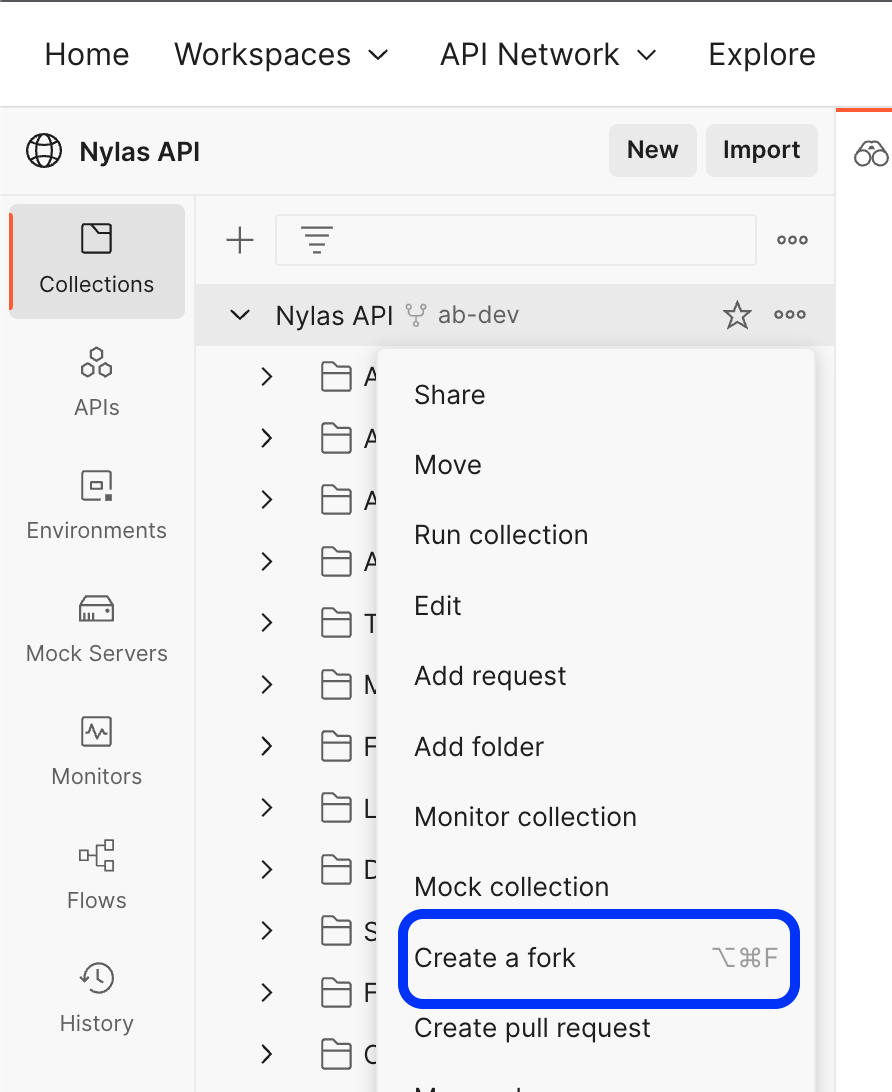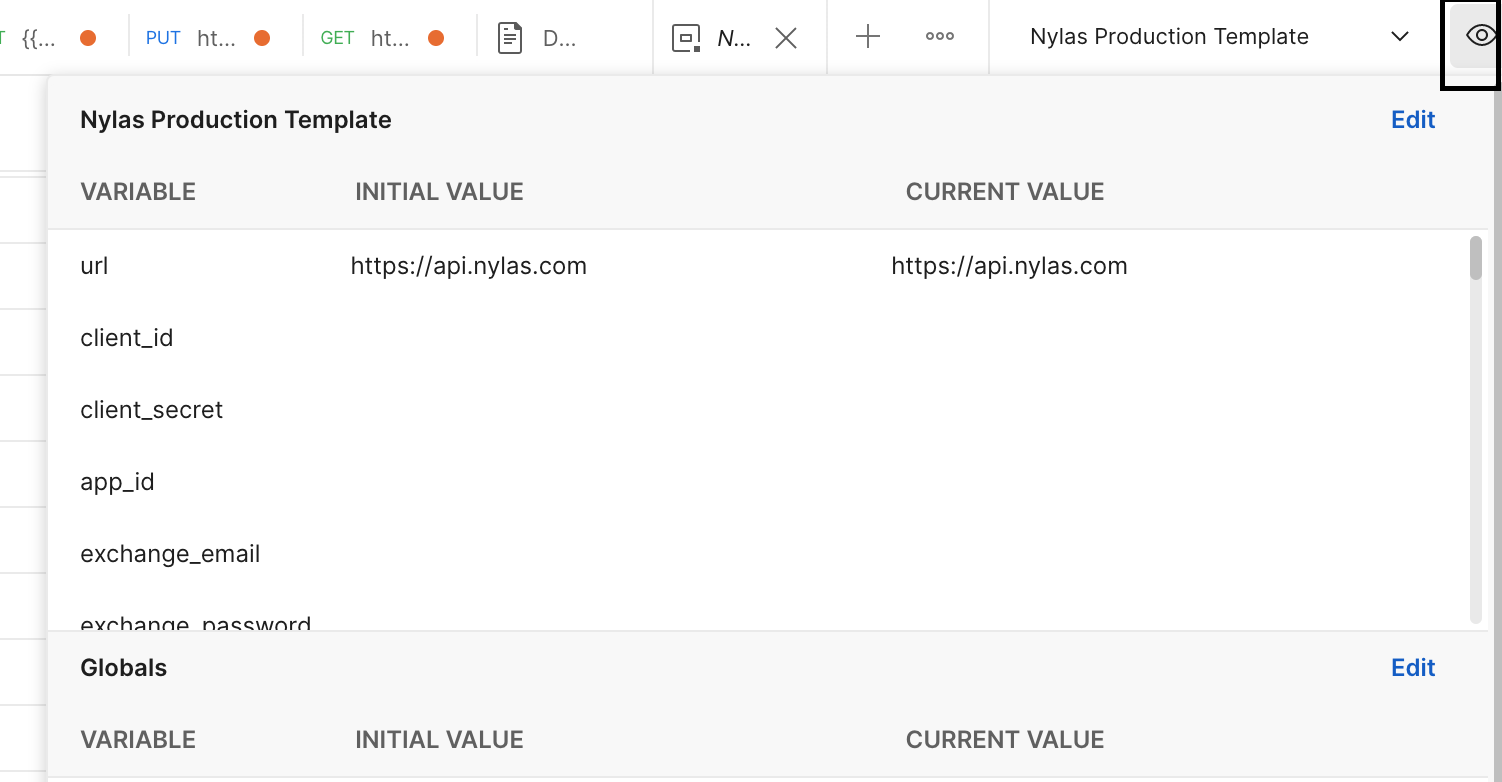Nylas Postman collection
You can use the Nylas Postman collection to quickly start using the Nylas APIs. The collection includes the following information:
- Environment variables: These variables allow you to reuse common values (for example, the Nylas API URL and the
client_idfor your application) across API calls.

This page will introduce you to the Nylas Postman collection and help you get started with it.
How Postman works
The Nylas Postman collection allows you to set and modify environment variables for use in API calls. The following section explains this in more detail.
Postman environment variables
Postman includes environment variables, which make it easy to store variables used throughout your collection. This allows you to have different values for production and staging environments, while needing to maintain only one collection of endpoints.
The Nylas Postman collection includes a list of initial variables that you can use when you make calls to the Nylas API. To see them, click the Environment symbol and select v3 Environment.
The following environment variables are required to start using the Nylas APIs:
baseUrl: The Nylas API URL. This is provided by default.- The
baseUrlmust include the region in which your Nylas application is located. By default, the collection uses the U.S. API URL (https://api.us.nylas.com). For more information, see the Data residency documentation.
- The
nylas_client_id: Your Nylas application's client ID. Available from the Nylas Dashboard.bearerToken: The Nylas API access token created in the Nylas Dashboard.grant_id: A grant ID representing an end user's Nylas account.calendar_id: A calendar ID representing an end user's calendar. This can be the email address associated with their grant.
Set up Postman
Follow these steps to set up Postman to access the Nylas APIs:
- Navigate to the Postman Nylas API overview to access the collection online.
- The v3 collection is split into two parts: the Nylas Administration API and the Nylas Email, Calendar, and Contacts APIs.
- (Optional) If you want to modify or change the collection, consider forking it.

- (Optional) If you have Postman installed, click the link below to run the collection locally.
Set up the Postman collection
If you're using Postman Desktop, follow Postman's official Importing and exporting data guide to import the Nylas environment variables, if they're not already in your collection.
To use production environment variables, make sure you have Environment selected and choose v3 Environment.

You must include your nylas_client_id and bearerToken. For more information, see Postman environment variables.
Modify environment variables
If you want to modify your environment variables, click the eye symbol at the top-right of the page and edit the current value for the parameters you want to update.

Some environment variables are filled in by default, and others are not. When you update environment variables, consider the initial value column as a Read-only column. Nylas recommends that you modify current values only with your specific values. Current values overwrite the initial values when you make API calls.
Note the following values:
- Autogenerated: These values are replaced as you start making requests. You can remove the
autogeneratedsetting and replace them manually. - URL: This value is pre-filled with the U.S. Nylas API URL (
https://api.us.nylas.com). - Blank fields: You must provide these values.
Make an API call
Now that you're all set up, you can make your first API call! Try making a Get Grant request to retrieve an end user's grant information.
What's next?
- Read How to Get Started with Nylas Using Postman blog post.
Video walkthrough
Prefer video? You can watch the Coding with Nylas livestream.